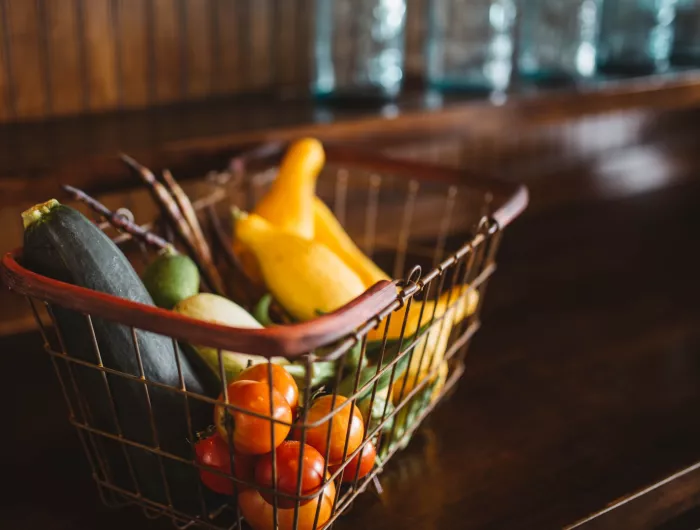Farm Bill an opportunity to promote healthier retail environment, says new report

Brooke Cagle - unsplash.com.
Researchers offer recommendations for leveraging the power of the Supplemental Nutrition Assistance Program to promote healthy food
When Congress reauthorizes the Supplemental Nutrition Assistance Program (SNAP) as part of the sprawling Farm Bill, it will have the opportunity to make policy changes that improve the retail food environment and make it easier for all shoppers to buy healthy food, according to a new report released today.
SNAP is the largest nutrition assistance program in the country, serving one in eight Americans. But while all Americans face challenges shopping for healthy food in a retail environment that disproportionately promotes unhealthful foods and drinks, retail marketing has a greater impact on shoppers who participate in SNAP. Researchers at the Center for Science in the Public Interest, in collaboration with researchers at the Johns Hopkins Bloomberg School of Public Health and the Robert Wood Johnson Foundation’s Healthy Eating Research program, convened food and beverage industry stakeholders, SNAP participants, researchers, and advocates to discuss policy recommendations that promote healthy retail both in-store and online.
To improve the healthfulness of the retail environment, the report recommends 10 policy changes across six categories: SNAP-authorized retailer requirements; research pilots, grant programs, nutrition education, voluntary rules, and recognition programs.
The report’s first three recommendations involve the requirements imposed on retailers as conditions for participating in SNAP by the U.S. Department of Agriculture. Currently, USDA only requires participating retailers to stock 36 staple food units—basic foods that make up a significant portion of people’s diets and that are prepared at home. The report recommends strengthening these stocking standards to better align with the Dietary Guidelines for Americans, which would increase availability of healthy food in small stores that accept SNAP. That would require Congress to remove an appropriations rider prohibiting USDA from increasing stocking requirements, according to the report. A 2016 attempt by USDA to update stocking requirements was torpedoed by lobbying from trade associations representing convenience stores.
“Nearly half of SNAP-authorized retail outlets are convenience stores, where supplies of fruits, vegetables, whole grains, and dairy foods are harder to find than in conventional supermarkets,” said CSPI campaign manager Joelle Johnson and co-author of the report. “Coupled with technical assistance from USDA and incentives, increasing stocking standards would be a powerful way for Congress to increase access to foods that reduce the risk of diet-related disease.”
To make it easier to shop for healthier options, the report recommends the establishment of placement standards for SNAP retailers to place nutritious foods in prominent locations both in-store and online. Currently these high-traffic areas are largely reserved for unhealthy items like soda, candy, and chips.
The researchers also recommend funding research pilots to identify marketing interventions that adapt the in-store and online retail environments to promote and incentivize healthier purchases. The report recommends that Congress appropriate $100 million to fund state-based nutrition security pilot programs. Pilots should explore the ways in which healthy food marketing interventions impact food purchases and consumption, retailer participation and feasibility, and any unintended consequences, according to the report. To date, USDA has only funded one such pilot, a successful incentive program in Massachusetts aimed at providing financial incentives at point of purchase for fruits and vegetables that established the evidence base for the Gus Schumacher Nutrition Incentive Program (GusNIP)
Given the effectiveness of GusNIP, the authors recommend that farm bill negotiators expand nutrition incentives and promote retailer participation and healthy marketing through GusNIP. The program has a demonstrated ability to increase fruit and vegetable purchases by SNAP participants, but more funding is needed to meet the demand for the program, according to the report. The report recommends increasing GusNIP funding and waiving an existing match requirement for grant applicants.
“The retail food environment, both in brick-and-mortar stores and online, is an important determinant of food and beverage choices, dietary quality, and, ultimately, diet-related health outcomes,” said Julia Wolfson, associate professor at the Johns Hopkins Bloomberg School of Public Health and co-author of the report. “As lawmakers move a farm bill through Congress, they should prioritize opportunities to promote a healthier shopping environment for all, and especially for those served by SNAP.”
The current Farm Bill expired on September 30.
# # #
Topics
Contact Info: Lisa Flores, 202-777-8368 or Jeff Cronin, 202-777-8370

